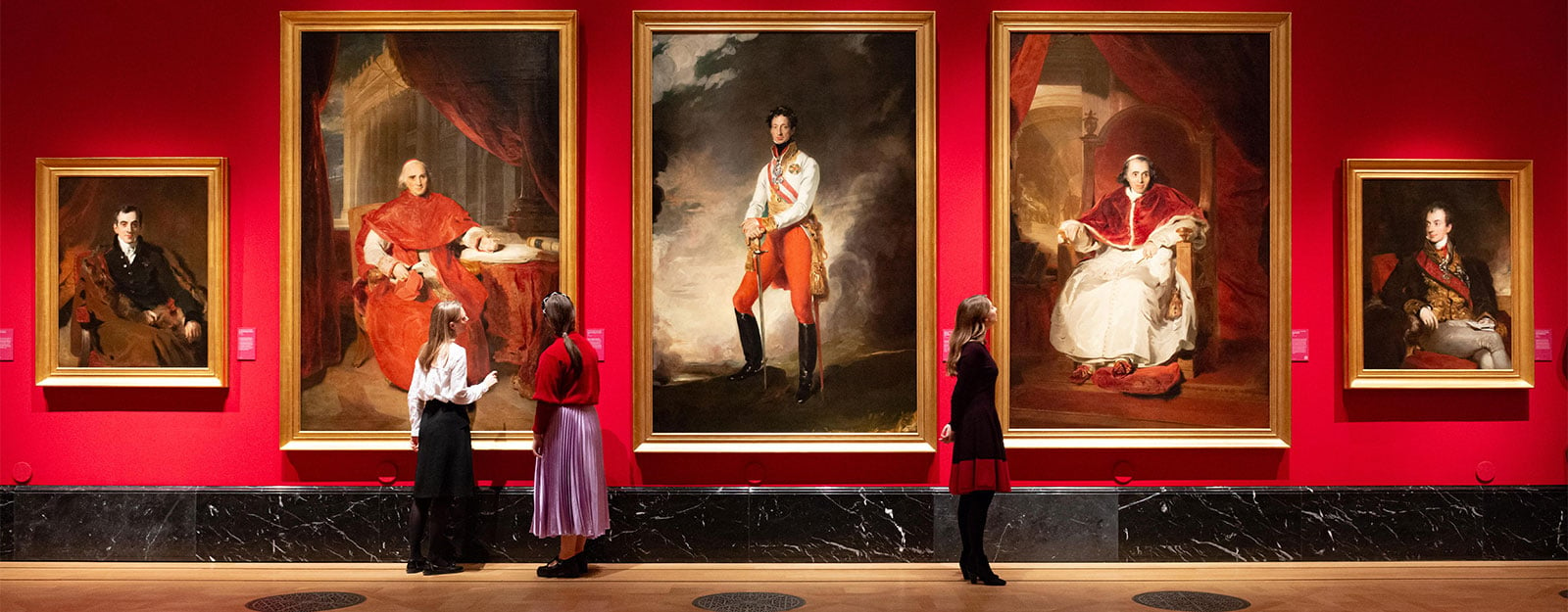
About the Collection
Learn more about the Royal Collection, one of the most important art collections in the world.
Sculpture
The sculpture in the Royal Collection ranges in date from the late 15th century to modern times. The works can be classified, like the paintings, according to whether they were commissioned or purchased as ‘Old Master’ or antique works. The former category is by far the largest, since statues and busts have played an important role alongside painted portraits in the commemoration of successive sovereigns, and in supplying official likenesses.
History
Both Henry VIII and Charles I filled their palaces and gardens with ancient sculptures and casts, but very few of these survived the sales of Charles I’s collection in 1650. The same fate befell the important group of Italian Renaissance bronzes acquired by Charles I and his elder brother Henry, Prince of Wales. A lifelike, painted terracotta bust by the Modenese sculptor Guido Mazzoni (d.1518), which may represent Henry VIII at the age of seven, is the earliest portrait bust in the collection and the earliest piece of Italian sculpture. A rare bronze model by Benvenuto Cellini (1500-1571), executed for François I of France in 1543, entered the Collection at an unknown date.
The French bronze-founder Hubert Le Sueur (c.1585-1670) came to England in the retinue of the French princess Henrietta Maria at the time of her marriage to Charles I in 1625. The King dispatched him in 1631 to obtain moulds of ancient statues from Rome and France, which he cast in bronze for the gardens of the royal palaces. Twenty-three bronzes survive from this commission at Hampton Court and Windsor Castle; they were the means by which many of the famous antique statues first became known in this country.
The collection of French sculpture was subsequently greatly enriched by George IV, who acquired around 75 outstanding bronze statuettes and marble busts of the 17th and 18th centuries, by sculptors such as François Girardon (1628-1715) Antoine Coysevox (1640-1720) and Philippe Bertrand (1663-1724). It was also George IV who brought into the Collection a famous group of three bronze busts by Leone Leoni (1509-1590) dating from the 1550s.
Two impressive sets of the Four Seasons in the form of bronze reliefs by Massimiliano Soldani-Benzi (1656-1753) and marble statues by Camillo Rusconi (1658-1728) entered the Collection much earlier, in the second quarter of the 18th century.
George IV introduced the tradition of populating the state apartments and corridors of his palaces with the marble likenesses of his friends, relations and heroes. These were ordered from contemporary British sculptors such as Joseph Nollekens (1737-1823) and Sir Francis Chantrey (1781-1841), who had the unique distinction of portraying four successive monarchs (from George III to Queen Victoria) from the life. George IV was also an important client of the renowned Italian sculptor Antonio Canova (1757-1822), from whom he commissioned three large marble statues for Carlton House. They are now displayed in Buckingham Palace.
Queen Victoria and Prince Albert were enthusiastic collectors of marble sculptures by British and German artists working in Rome in the 1840s and 1850s, in the wake of Canova and his rival Bertel Thorwaldsen. The royal couple were fond of exchanging birthday gifts of neoclassical statues by such sculptors as William Theed (1804-1891), Emil Wolff (1802-1879) and Richard Wyatt (1799-1850). All of these remain at Osborne House, Buckingham Palace and Windsor Castle, constituting the finest collection of this kind to remain in the possession of the family for whom they were first made.
Towards the end of the 19th century and into the 20th, members of the royal family commissioned several monuments and other works from the leading sculptor and goldsmith Sir Alfred Gilbert (1854-1934). Gilbert's masterpiece, the tomb of the Duke of Clarence and Avondale, can be seen in the Albert Memorial Chapel at Windsor Castle.
Click on a highlight to learn more.







